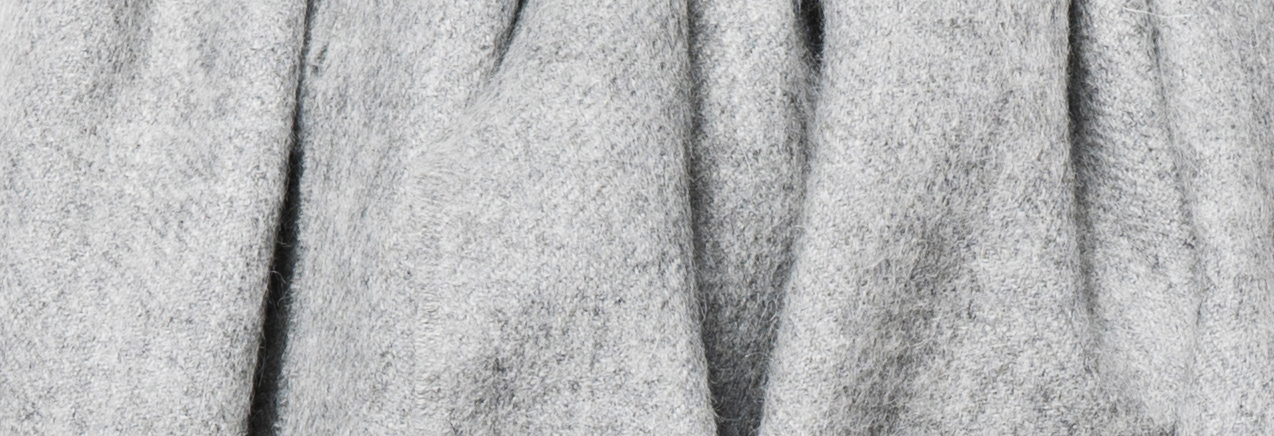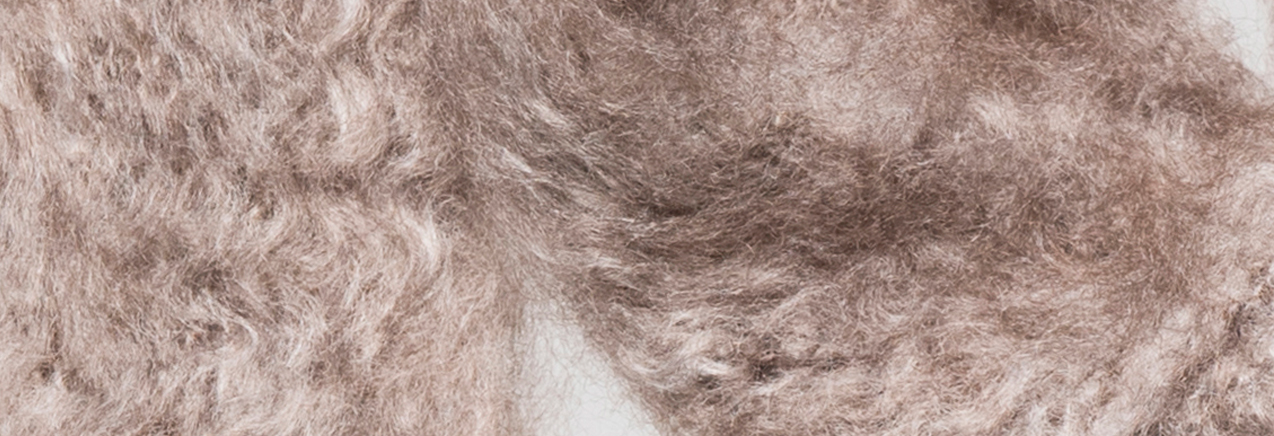
ALPACA – luxurious, silky and shiny
Living at a height of a thousand metres, alpacas produce wool that has one of the finest fibres in the world, with unique features.Alpacas originate from the Andes Mountains in South America, in Chile and Peru. Nordic Swan Living’s alpaca products come from Peru. There are only approximately 4 million individual alpacas in the world, whereas Kashmir goats total up to 450 million. The production lots are small, therefore alpaca is a very rare natural material.
Alpacas are camelids and they are related to llamas and camels. Alpaca is the oldest domesticated animal, and it has been bred as a wool producer for over 5,000 years. Alpacas have lived for hundreds of years among Inca Indians. The locals have dubbed alpaca wool the Gold of the Andes. Only royalty and rulers were entitled to wear alpaca wool.
Alpacas originating from Peru live often semi-wild, and the herds are gathered only for shearing. Shearing is an important part of alpaca care, as the alpacas’ thick fur is too hot in summertime. Most of the animals’ take to shearing quite easily, some even seem to enjoy it.
Compared to sheep and goats, alpacas are more gentle towards the environment – their soft paws don’t cause abrasion and they don´t eat roots of plants.
Alpaca wool wearable both in summer and winter
The temperatures in the Andes Mountains can vary by as much as 50°C. Like silk, the alpaca´s hollow fibre has extremely good thermal insulation abilities: their wool is warm in cool weather and also cool in hot weather. Alpaca wool is therefore great in summertime as well, yet extremely good in wintertime too. All items of clothing are functional indoors as well.Alpaca is considerably softer than traditional wool fibres. Alpaca wool is silky-soft and naturally shiny, and not itchy. Alpaca is a safe material also for babies and people with sensitive skin. The alpaca wool doesn’t contain lanolin (wool wax) so it is suitable for those allergic to wool. Alpaca wool is also very light and durable. Considering its weight, the alpaca wool is many times warmer than sheep wool.
Due to its composition, the alpaca wool fibre may absorb moisture by as much as 30% more than sheep wool or cotton, without feeling wet. Different from all other fibres, the alpaca wool is warm even when moist. Alpaca fibre is excellent for damp Nordic autumns, winters and springs, while keeping its wearer dry and warm.
Alpaca wool is antibacterial and its fibres are not favoured by wool eaters, such as moths. Dust mites don’t like alpaca wool, which is a significant reason to choose it for those suffering from dust allergy.
Alpaca products are easy to care
Alpaca wool is naturally very dirt-repellent, and normally just airing is enough to clean the product. Mechanical dirt drops off dry when shaken. If necessary, wash the product with lukewarm water and mild soap, rinse with lukewarm water. The product mustn’t be twisted dry but gently squeezed. Dry flat, preferably.
CAMEL – downy soft
Camel wool or camel hair originates from a fine undercoat of a two-humped camel. Camelhair moults in late spring when the heat arrives in Mongolia. Camel wool products of Nordic Swan Living are produced from the finest camel wool from camels who live in the Gobi Desert in Mongolia, the wool protecting the camels from severe temperatures, up to -40 C. The extremely rough winters and great variation in temperatures in the area have favoured camels, having especially warm fur to protect them.There are two species of Camel family, a dromedary (Camelus dromedarius) and a bactrian (Camelus bactrianus). The camels live semi-wild and the herds are gathered only for shearing. Shearing is an important part of camel care, as the camels’ thick fur is too hot in summertime.
The under fur of a camel produces fine undercoat in the moulting time of spring, and coarse guard hair from the camel’s top fur. A camel produces only a couple of kilos of fine undercoat, so genuine camel hair is very rare and unique.
Products made of camel wool are ecological and ethical. Camels live in deserts which are a natural habitat for them; being able to live by natural nutrition only and thus not straining the environment. Camels also enable the livelihood of thousands of years of old tribes and the continuation of traditions in extreme desert conditions.
Breathable camel hair is one of the warmest types of wool
Their fine undercoat hair is very thin, shiny and really warm. Considering its weight, it is one of the warmest types of wool. This is explained by its form: partly hollow, warm air stores inside their fibres operating like a furry thermostat, their body warmth maintaining it.Even if the material is called camel hair, it is more like down. Camel hair guarantees a pleasant combination of softness and warmth to cold Nordic winters, on the other hand camel hair has cooling and breathable features, perfect for summertime, and when inside. Considering its weight, camel hair is many times warmer than wool.
Camel hair is a breathable material and it has a unique ability to warm even when damp, because it collects moisture.
Camel hair products have a positive impact on health and are used as health products to treat e.g. rheumatism. Camel hair suits wool allergy sufferers well, as a camel is not a part of the species of sheep.

MOHAIR – lovely puffy and soft
Mohair, or angora goat’s wool, is one of the finest and most exclusive natural materials there is in the world. Produced in accordance with sustainable development methods, mohair wool is made of fine quality, silk-like wool of angora goats. South Africa is the largest mohair wool producer, but it originates from the Tibetan Steppes.Mohair is a renewable natural material, offering a production chain between an animal and a man in accordance with sustainable development. Angora goats are sheared twice annually, which do not harm animals in any way. In Karoo, the habitat of Angora goats, hot and dry summers are combined with cold winters and the vegetation of a semi-desert. The natural conditions of Karoo are the best habitat for South African angora goats.
The finest mohair quality is received from the guard hair of an angora goat of less than one year old, so called kid mohair. For the first time, a mohair goat is sheared at the age of about 8 months. A mohair goat can produce spinnable wool for about 6 years. Wool called as kid mohair is the finest mohair, and thin yard is spinned from it.
Nordic Swan Living’s mohair products are hand made in South Africa, and each one of them is unique.
Mohair is soft, light and durable
Kid mohair is exceptionally soft and it adds a sophisticated feeling to a product. Mohair fibre is very tall and shiny. The fibre is easily straightened, non-electrical and durable.Mohair fibre breathes and collects moisture within itself. Mohair is one of the most durable natural fibres, due to its flexibility. The natural flexibility gives the product a specific feature: it will not crease.
The natural shine of mohair fibre gives the product a silky shine. Mohair is extravagantly light, and famous for its versatility: cool in the summer, warm in the winter.
The wool will not itch or irritate the skin.
